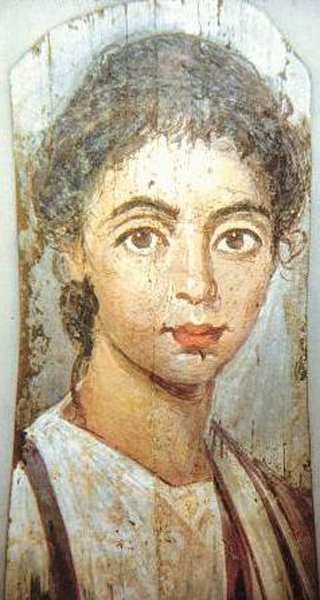From the Roman occupation of Egypt survives a unique collection of portraits that provide unparalleled insight into individuals of that period. Known as the Fayum mummy portraits, these panel paintings were used as grave markers for the individuals that they depict, rather than as symbols or metaphors.
Beginning in the late first century BCE, this type of portrait continued for several hundred years in areas all over Egypt, and can be seen transitioning into the Byzantine era iconography. Originally found attached to the facial area of the mummy, they are either made from encaustic, a wax based paint, or tempera, an egg yolk based paint. Clearly Greco-Roman in style, the faces and clothing are more naturalistic than the stiff, stylized Egyptian portraits. There are about 900 known mummy portraits with a majority found in the necropolis at Faiyum, thus their name.
As infant and child mortality was relatively high during much of history, many of the portraits are of children. Yet they would not have been average children as only the wealthy would have been able to afford to have a portrait made. The ethnic heritage of the people was a mixture of Greek, Roman, Macedonian and Egyptian, yet fashion of these individuals, the hair and costume, is Roman.
This image shows a doe-eyed young girl wearing a hint of a smile. It is difficult to reconcile that this is a funerary image, with no symbolism and nothing hinting that this face is that of a dead girl. Some scholars had thought that perhaps these were created during the lifetime of the person, which would be a nice thought, but does not actually make sense. As if a snapshot, she peacefully gazes at us from thousands of years ago.

